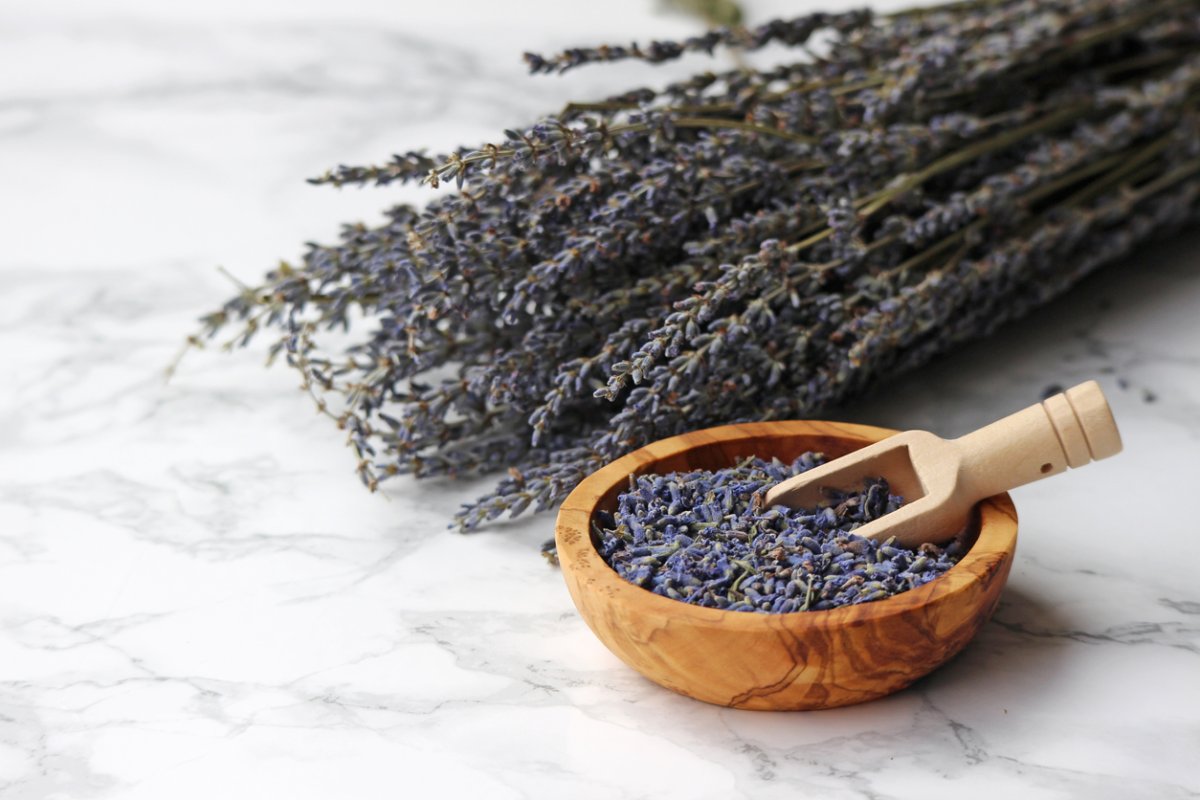

We may earn revenue from the products available on this page and participate in affiliate programs. Learn More ›
Dried flowers provide colorful, long-lasting, low-maintenance floral arrangements without the need for watering. Because they are dehydrated, their colors are muted and they might be more fragile than fresh flowers, but dried flowers still provide a beautiful display. There are numerous other uses for them, as well—here are just a few ways to use dried flowers.
- Bouquets
- Wreaths
- Garlands
- Cooking
- Cleaning product ingredients
- Sachets
- Bath and body care
- Gifts
Preserve the flowers sent to you for lifelong memories, or buy flowers specifically for preserving. You can also source flowers from your own yard or garden for an inexpensive and more personal result.
Learning how to dry flowers is easy. There are several methods from which to choose, most of which require little skill and few (if any) tools.
How to Hang Dry Flowers
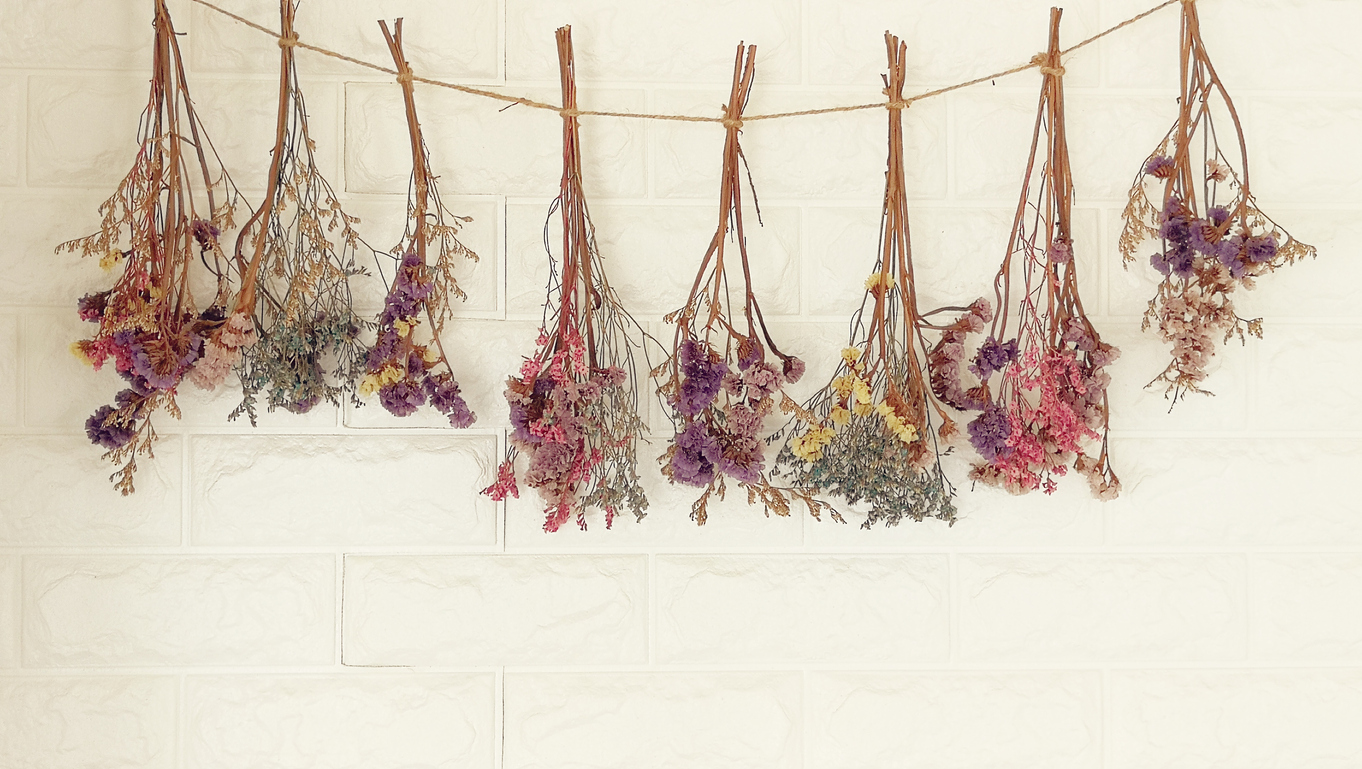
Air-drying small bundles of flowers by hanging them upside down is one of the oldest and most traditional methods of drying flowers. Hanging dried flowers is also easy, requiring few tools and little skill, which makes it a good method for those looking for a simple way to dry out flowers.
This method works well for rose, hydrangea, artemisia, Love-in-a-Mist (nigella), larkspur, statice, celosia, baby’s breath, lavender, sea holly, yarrow, strawflower, globe amaranth, bachelor’s buttons, astilbe, and many wildflowers. Choose flowers in bud or early bloom for best results.
SUPPLIES
- Floral scissors
- Thorn stripper
- String
- Stick or hanger
STEP 1: Remove any extra or unwanted leaves from the flower stems.
Use a thorn stripper to remove thorns and unwanted foliage from the flower stems, but you can leave some greenery on the stems if you like the look. They’ll dry, but too many leaves will add to the drying time.
STEP 2: Group small bundles of flowers together and tie with string.
Gather small bundles of flowers together and tie them together with string, twist ties, or rubber bands. Be sure to tie them securely because the stems will shrink as they dry and can fall out of loosely tied bunches.
STEP 3: Attach the bundles of flowers to a stick, hanger or pole.
Attach the bundles to a stick, hanger, or other support sturdy enough to hold them for an extended period. Space out the bunches to allow for optimal airflow to ensure they dry evenly.
STEP 4: Hang the stick in an out-of-the-way spot while flowers dry.
Hang the stick in an out-of-the-way spot where the flowers won’t get damaged or get consistent light. Choose a dark, warm, dry place such as a utility closet, as light will fade the blooms. Air-drying can take 2 to 4 weeks.
How to Press Flowers
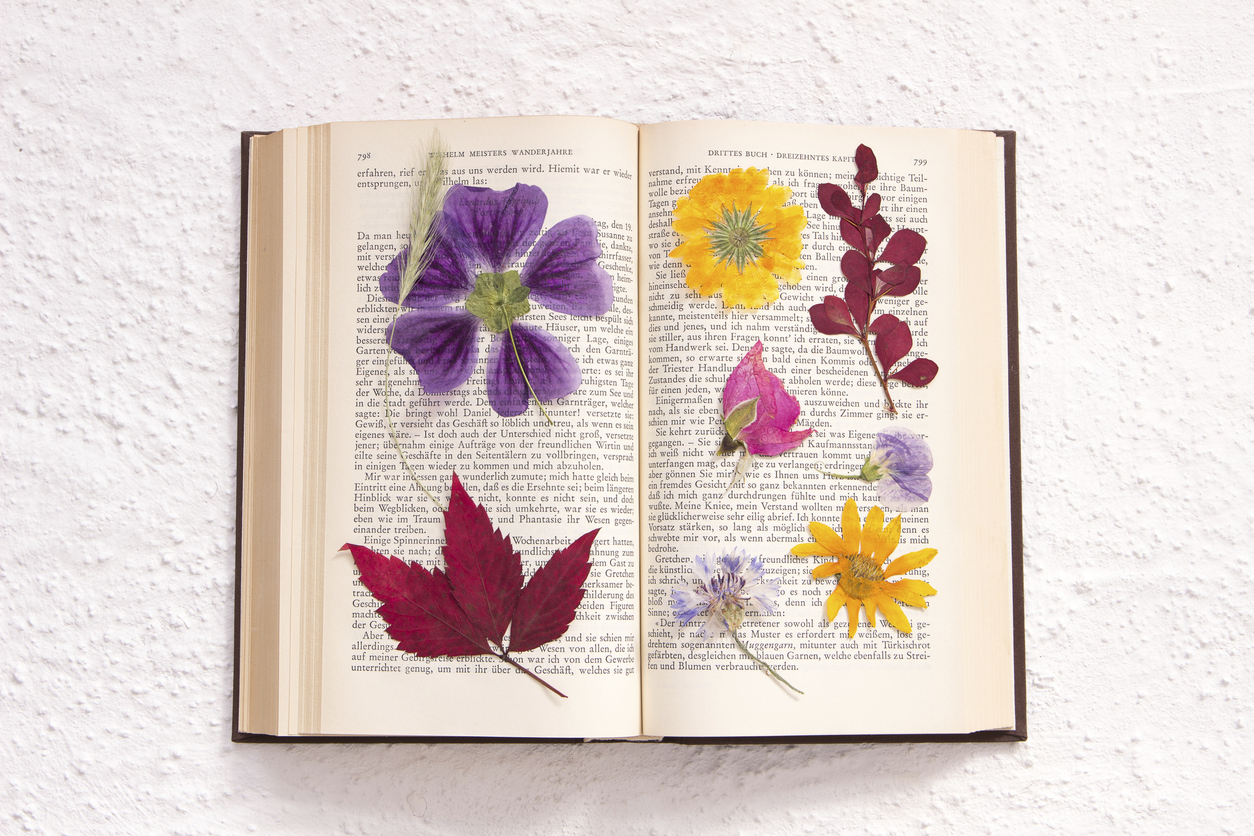
If you want to frame dried flowers on a wall or put them on greeting cards, it’s especially helpful to know how to dry and press flowers. It’s an age-old tradition dating back to the 16th century, and it’s still going strong today. While you can buy a wooden flower press or make your own, the process can also be completed using a heavy book and little else.
The best flowers to dry by pressing have a single layer of petals and flat faces, such as violets, daisies, vinca, single-petal roses, pansies, zinnias, delphinium, plumbago, and esperanza. To preserve as much color as possible, choose flowers at their peak, when they’re just starting to bloom.
SUPPLIES
- Floral scissors
- Thorn stripper
- Thick book
- Paper
- Weight
- Wooden flower press (optional)
STEP 1: Remove unwanted leaves from the flower stems and lay the flowers flat on paper.
After removing excess leaves from the flower stems, lay flowers on absorbent paper such as newspaper, printer paper, untreated facial tissues, flat coffee filters, flat cardboard, or blotting paper. Leave space between the flowers to aid in drying, and avoid using paper towels—their patterns could leave an imprint on the flowers.
STEP 2: Place absorbent paper in an open book and then place flowers on it.
Cover the flowers with additional absorbent paper and place them in a book. Be sure to use a book that’s large enough to fully contain the flowers, and select one you don’t mind getting some water damage as the flowers dry.
STEP 3: Close the book and weigh down the cover.
Carefully close the book without disturbing the flowers. Place weight on top of the front cover—another heavy book or two works well—and place it in a spot where it will be undisturbed for the 2 to 4 weeks it takes for the flowers to dry.
How to Dry Flowers in Silica Gel
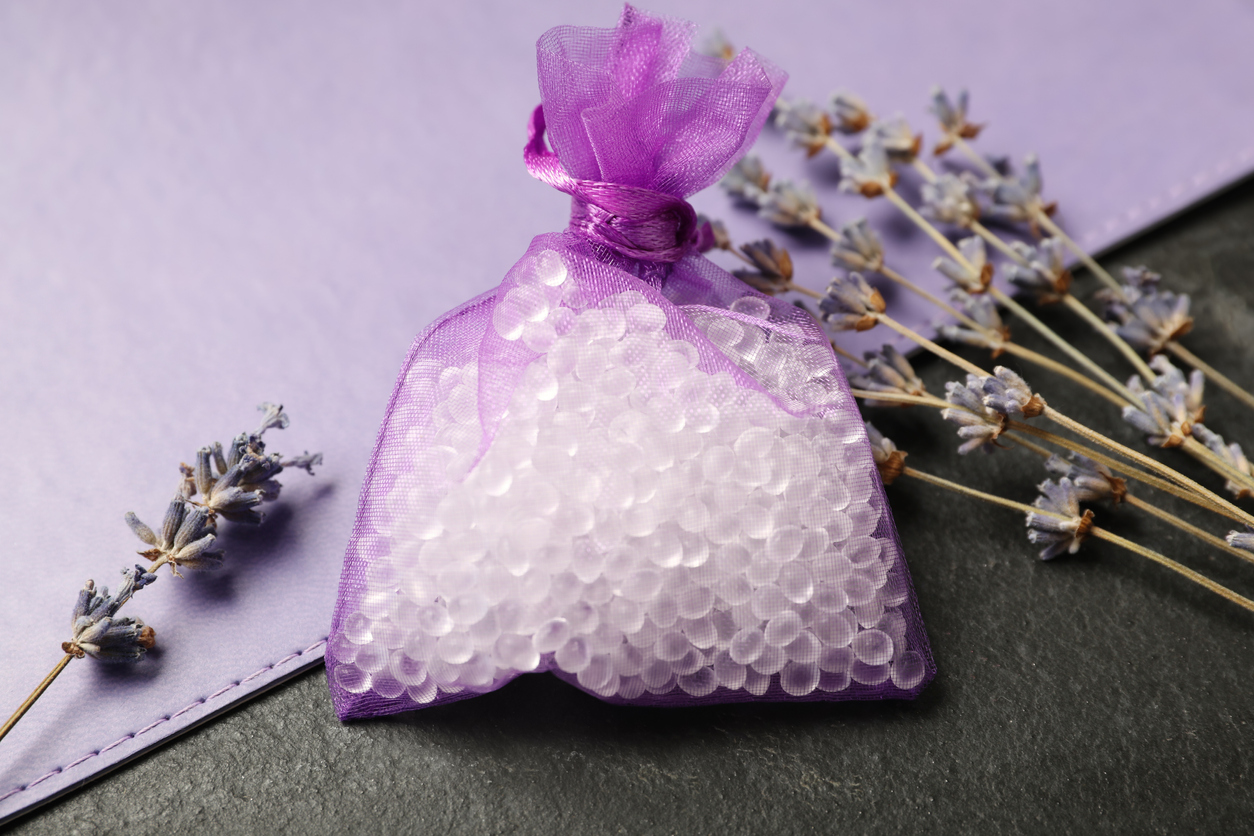
Drying flowers in silica gel or another desiccant can preserve a flower’s color better than other methods, but it can take longer than some other methods. If you need to know how to dry hydrangea flowers in particular, silica gel is a good option.
This method is a good choice for multi-petaled flowers, flowers with large blooms, and any other type of flower that doesn’t work as well with other drying processes (as well as those that generally do). While most of the supplies required for this process are common household items, you’ll have to go to a garden supply store for the silica gel or order it online.
SUPPLIES
- Floral scissors
- Thorn stripper
- Silica gel (or silica sand)
- Airtight container
- Dust mask
- Gloves
- Paint brush
STEP 1: Choose fresh flowers, remove excess foliage, and trim the stems.
Prepare the flowers as you would for other methods by first removing unwanted foliage and trimming the stems, and keep in mind that the stems can be only as long as the plastic airtight container they’ll dry in. Make sure the flowers aren’t damp before working with the silica.
STEP 2: Place silica gel and flowers into a dry, airtight plastic container.
Use a dust mask and gloves during this procedure to prevent inhalation of silica dust. Ensure the container is dry before pouring an inch-deep layer of silica gel or sand into it. Place the flowers on top of this layer, face up. Cover completely with additional silica.
STEP 3: Seal the container and store in an undisturbed location.
After covering the flowers, seal the container and store it at room temperature in a place where it will remain undisturbed. The drying time varies depending on the flower type, ranging from a few days to a few weeks. Once the flowers are dried, remove them and use a paint brush to gently dust off excess silica.
How to Dry Flowers in the Microwave
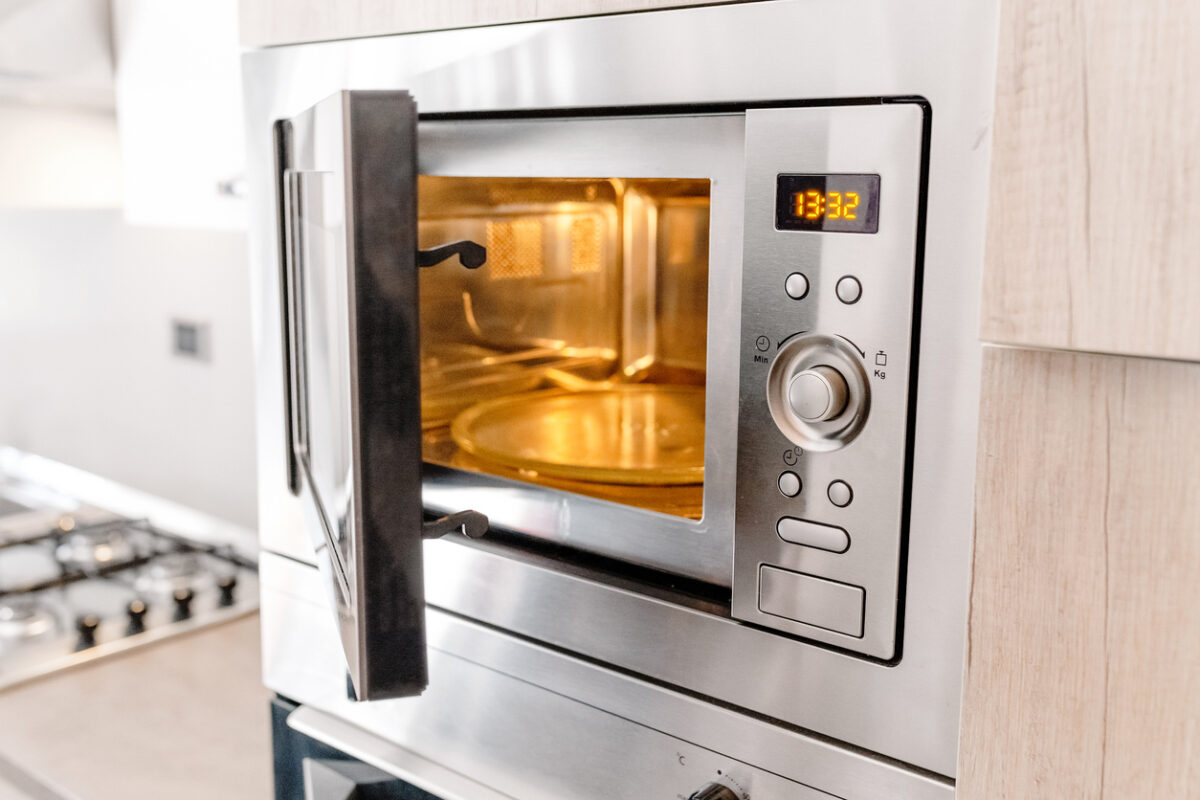
Learning how to dry flowers in the microwave isn’t any harder than the above methods. It’s a great option if you need to dry flowers quickly. Instead of days or weeks, flowers dry in minutes with this process.
Almost any type of flower can be dried in the microwave. Larger, dense flowers like roses, mums, sunflowers, and hydrangeas will take longer to dry, and large flowers can also be problematic if your microwave-safe bowl or microwave are small.
SUPPLIES
- Microwave
- Microwave-safe bowl
- Floral scissors
- Thorn stripper
- Silica sand
- Dust mask
- Gloves
- Water
- Paint brush
STEP 1: Cut the stem to length and remove unwanted foliage.
The flower you wish to dry will have to fit inside a microwave-safe bowl, so trim the stem to the desired length and remove any unwanted foliage from the stem.
STEP 2: Layer silica sand and the flower(s) in the bowl.
Before handling the silica sand, don gloves and a dust mask to protect your skin and lungs against fine silica powder. Pour a thin layer of silica sand into the bottom of the bowl. Place the flower on top of the silica, and cover it completely with another layer of silica sand. If your bowl is large enough—or your flowers small enough—you can place multiple flowers in the same container, as long as they aren’t touching.
STEP 3: Microwave in 30-second intervals, checking to see if the flower is dry.
Place a glass of water next to the bowl in the microwave. Heat at 30% power for 30 seconds. Repeat as often as needed until the flower is dry. Typically, this takes around 2 to 3 minutes.
STEP 4: Leave the flower in the silica sand for 24 hours.
After determining the flower is dry, cover it back up with the silica sand and let it sit for 24 hours to ensure it is completely dry. Then, uncover the flower and dust off any remaining sand with a paint brush.
How to Dry Flowers in the Oven
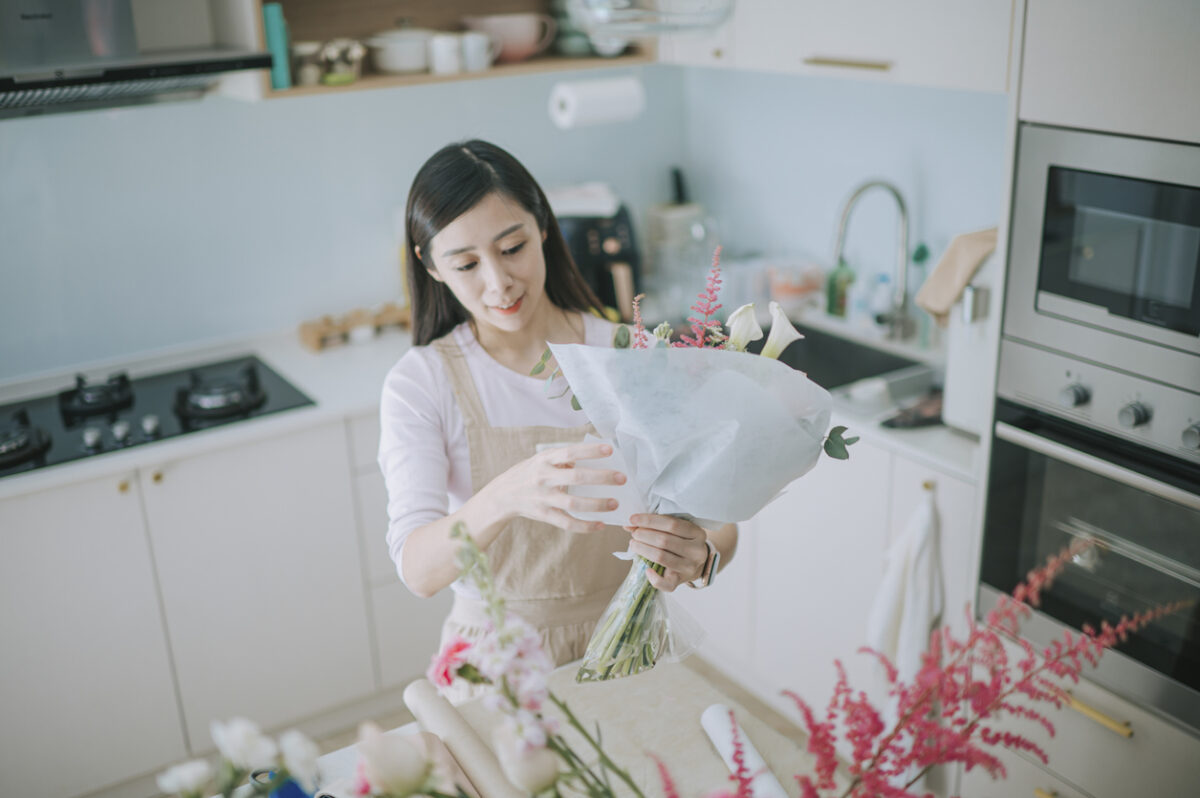
Another household appliance that can dry flowers is an oven. Baking blooms is an easy and effective way to dry larger flowers. However, you might lose more petals with this method, and you’ll almost certainly lose more color in the oven than with other processes.
This method is ideal for flowers with multiple layers, large and dense flowers, and flowers with open-faced petals such as roses, tulips, zinnias, and chrysanthemums that can withstand the heat of an oven.
SUPPLIES
STEP 1: Preheat your oven to its lowest heat setting.
Preheat your oven to 150 to 200 degrees Fahrenheit—or whatever the lowest heat setting is. For convection ovens, opt for 175 degrees if possible.
STEP 2: Prepare your flowers by removing excess foliage and trimming the stems.
Use floral scissors and a thorn stripper to remove excess foliage from the stems, and trim the stems to your desired length.
STEP 3: Evenly space flowers on the cooling rack.
Place the flowers on the cooling racks, spreading them out evenly to make sure they don’t overlap. It’s not the end of the world if they touch, but that could lead to greater petal loss, depending on the type of flower.
STEP 4: Bake the flowers on low for 1.5 to 2.5 hours.
Place the racks in the oven and bake for 1.5 to 2.5 hours on the lowest setting. Leave the oven door slightly open to allow moisture to escape. Different types and sizes of flowers will dry at different rates, so it’s important to check the flowers every half hour. Remove those that are dry so they don’t burn. Let them cool and finish drying outside of the oven for 8 to 12 hours.
Top Tips for Preserving Dried Flowers
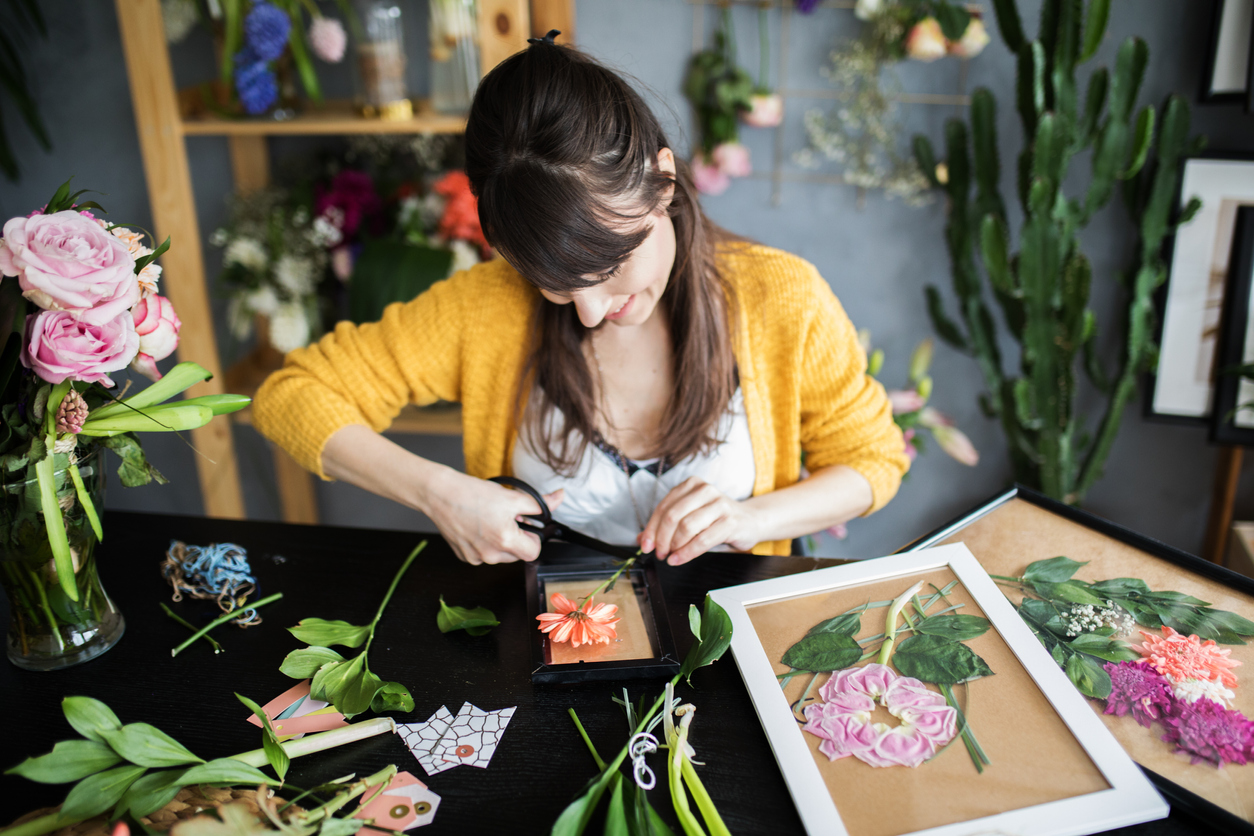
Whichever way you decide to dry your flowers, you’ll likely want to know how to preserve them to enjoy their beauty for a long time. Here are a few tips for extending the life of dried flowers.
- Keep them out of direct sunlight to prevent the colors from fading.
- Select healthy, fresh flowers for longer life—wilted, bruised, or damaged flowers won’t last as long after drying.
- Spray unscented hairspray on them to prevent petal loss and help them hold their shape.
